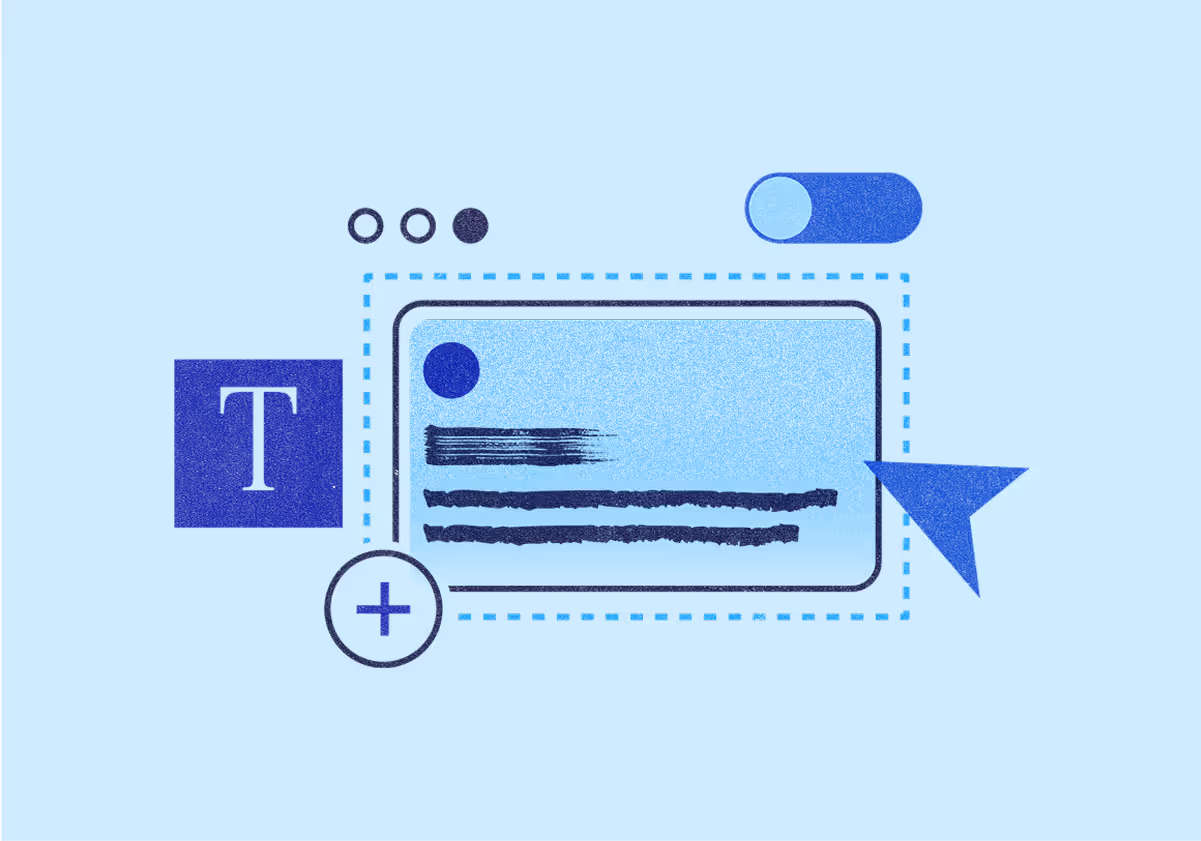Tanaaz Khan
March 2, 2023
Picmonkey Alternatives: Top 10 Picks to Edit & Generate Images
Tired of using Picmonkey? Or finding it too expensive? Here are 10 alternative image editing and AI-powered image generation tools to help you get started.

The demand for visual content is only increasing, evident from the fact that the visual content market is expected to grow by $1.4 billion between 2022 and 2026. Visual content hooks readers and increases engagement. This is why it's no surprise that marketers spend significant production time creating the right branded graphics.
However, if you’re looking to cut down this production timeline and popular tools like PicMonkey don’t seem to do the trick, keep reading.
This blog post will review 10 PicMonkey alternatives you can use to craft eye-catching designs worthy of being published anywhere.
10 Best PicMonkey Alternatives To Create Stunning Graphics
Here’s a curated list of 10 PicMonkey alternatives to help you create a stunning design without breaking the bank:
1. Jasper's AI Image Suite
Jasper's AI Image Suite is a suite of AI art generation tools that can turn your imagination into striking images in seconds. Instead of spending days editing a picture or looking for the perfect free stock photo, create images in one click.
Jasper lets you choose specific parameters and generate images or upload any image you'd like. Once you provide the input, its algorithms start working their magic. With this powerful tool, you can create compelling visual stories by combining unique elements to convey a certain message—all while spending less time editing.


Top features:
- Customized generation: Generate images in varying styles and moods while drawing inspiration from famous artists.
- Keywords for fine tuning: Add up to nine keywords to finetune the end product and ensure it’s to your liking.
- Royalty-free: All images are royalty-free and available to use as per the Creative Common license.
Pros:
- Functions are easy to use and self-explanatory, making them accessible to users
- Multiple content filters are present to prevent generation of unsafe or sensitive images
- Able to create an unlimited number of images (on a paid plan), which is useful for practicing prompt generation
- No restrictions on image usage for personal or commercial use
- Content and images can be created in one dashboard, making it an all-in-one tool
- Extensive training and help materials to help you get started
- Advanced capabilities like image background removal, generative fill, upscaling and downscaling
Cons:
- A user needs to learn how to write creative prompts to receive adequate results.
- For uploaded images, others might have access to your copyrighted material.
Pricing:
Book a demo for more pricing info.
2. Canva
Canva is a design tool for creating stunning visuals, videos, and other content. It uses a drag-and-drop user interface and library of elements to customize any creative project with minimal effort.

Top features:
- Text to image generator: Generate images using a short text prompt describing the image.
- Photo editing: Use image editing features like image enhancer, cropper, filters, animations, etc.
- Video recorder and editor: Use features like the video trimmer, an MP4 video converter, and an online screen recorder.
Pros:
- Several editing and content creation features are available in the Free plan.
- Users can get started quickly, as there’s no steep learning curve involved.
- Hundreds of templates are available for different purposes.
Cons:
- The app is bulky and can slow down the performance of your device.
- Video editing features and templates are not as vast as competing products.
Pricing:
Canva has a free plan with 250,000 templates and 1+ million graphics to support content creation. For individuals, there is a plan called Canva Pro, which costs $12.99 per month. Their next plan, called Canva for Teams, costs $14.99 (5 members) and includes advanced features like background removal, resizing, etc.
For teachers and schools, there is a custom plan for which you need to contact their sales team.
3. Adobe Photoshop
Adobe Photoshop allows users to perform simple editing tasks, such as adding text and cropping, to more complex ones, like retouching, combining images, and color correction.

Source: ephotozine.com
Top features:
- Masking: Make precise edits only to specific parts of the image using the layer masks.
- Sky replacement: Swap out skies and replace them with any sky image from Adobe's library or your own.
- Content-aware fill: Remove objects from your existing photo and it fills in the gap automatically.
Pros:
- Offers a comprehensive and versatile set of tools depending on the customer’s use case
- Includes a Camera RAW plug-in that helps in keeping the original image intact
- Range of features for video and animation editing
Cons:
- Customer support is not up to the mark, making it difficult to cancel or downgrade subscriptions.
- It takes up too many resources to run the application on your system.
- There is a steep learning curve to get started.
Pricing:
Adobe Photoshop offers a 7-day free trial for all its plans. It has three paid tiers: Photoshop Plan, Photography Plan (1TB), and All Apps Plan. Photoshop Plan costs $20.99 per month and includes Adobe Express and Fresco. Photography Plan costs $19.99 monthly and includes Lightroom but not Express and Fresco.
The All Apps plan costs $54.99 per month and includes access to all the apps in the Creative Cloud.
4. GIMP
GIMP operates on all major operating systems and supports all major formats. It also offers advanced features such as color correction tools, brush dynamics, support for different graphics tablets for a realistic painting experience, and more.

Source: macupdate.com
Top features:
- Customizable interface: Customize the editing environment based on your preference.
- Photo enhancement: Correct common issues like perspective distortion, barrel distortion, etc.
- Digital retouching: Use advanced retouching techniques like clone tool, healing tool, etc.
Pros:
- The free version makes it accessible to all users with basic editing needs.
- A wide variety of tutorials is available within the community to help you get started.
Cons:
- A limited number of features compared to competing tools in the market
- The program can be outdated, making it difficult to use.
- Not user-friendly, making it difficult to navigate and edit photos
Pricing:
GIMP is a free, open-source image editor available for use on operating systems like GNU/Linux, macOS, and Windows.
5. Pixlr
Pixlr is a cloud-based photo editor, and it offers much more than classic desktop-style editing. It's an AI-powered online photo editor with various features that help you create professional photo edits quickly and easily.

Top features:
- Pixlr X: Edit photos, create templates, and generate images using its AI algorithm.
- Pixlr E: Advanced photo editor with pre-built templates and design maker to create more high-quality images.
- Photomash: Create one-click studio images for e-commerce stores or social media graphics.
Pros:
- Able to batch-edit photos using the Batch Editor, helping users save time
- Good editing features for improving aspects like vibrancy, contrast, etc.
- A cloud-based app that you can use on any browser and that limits background service usage
Cons:
- The app's filters are outdated compared to competing products in the market.
- Too many confusing product options with no clear distinction on their value, such as level of editing and difference in features
- The mobile app user interface is challenging to navigate.
Pricing:
Pixlr has a free plan with one seat and access to all of its AI tools. It has three paid tiers: Plus, Premium, and Team. The Plus plan costs $1.99 per month and is ad-free. The Premium plan costs $7.99 per month and provides access to all of its features, like templates, fonts, and tutorials. The Team plan costs $12.99 per month for five seats and $3.99 for each additional seat.
6. Fotor
Fotor is a cloud-based photo editing tool that can be used to create graphics. Its patented High Dynamic Range (HDR) technologies allow users to manipulate colors, contrast, brightness, and saturation for maximum effect.

Source: Google Chromestore
Top features:
- Photo Editing: Includes editing features like Mosaic, Blur, and Funky Effects powered by HDR technology.
- Portrait Beauty: Includes features like teeth whitening, red-eye removal, and wrinkle remover for self-portraits.
- Photo Collage Maker: Create collages from scratch or pre-built templates.
Pros:
- Able to use it offline on both mobile devices and desktops
- Editing features are best suited for social media graphics.
- Individual feature sets for different use cases like self-portraits, graphics, etc.
Cons:
- The user interface is counterintuitive and needs additional navigation to get to the desired feature.
- Features are basic, especially for professional designers and marketing professionals.
Pricing:
Fotor has a free plan that offers basic editing features and limited design resources. It has two paid tiers: Fotor Pro and Fotor Pro+. Fotor Pro costs $8.99 monthly and includes advanced design and editing tools, photo frames, and stock photos. Fotor Pro+ costs $19.99 monthly and consists of a weekly updated stock library and priority email support.
7. BeFunky
BeFunky is an image editing platform featuring hundreds of customizable templates and a huge library of tools. It also has an AI image enhancer to improve your images.

Top features:
- Photo to Art/Cartoon: Turn your existing images into paintings or cartoons using a single click.
- Photo Enhancer: Enhance your images and correct issues like contrast and color imbalance using AI-powered smart technology.
- Graphic design tools: A suite of tools for graphic designers to create graphics like invitations, gift cards, and social media templates.
Pros:
- As a cloud-based app, BeFunky removes the need to download or install any software.
- AI-powered features make it easy to edit pictures quickly.
Cons:
- No refunds and a lack of transparency around invoices
- The free version has too many ads, which interferes with the editing process.
- Only ideal for beginners looking for simple editing features
Pricing:
BeFunky offers two plans: Free and BeFunky Plus. The free plan has only basic photo editing tools and a limited design features library. BeFunky Plus offers the entire suite of editing and designing tools (including AI-powered features) for $9.99 per month.
8. Adobe Creative Cloud Express
Adobe Creative Cloud Express is used to create and edit stunning images quickly. With thousands of beautiful templates, users can customize their creations by adding their own image choices and text.

Top features:
- Template library: Access thousands of pre-built templates for various purposes like flyers, social media posts, etc.
- Stock image library: Access Adobe's royalty-free stock image library (paid plan only).
- Branding: Apply brand logo, colors, fonts, etc. to designs using a single click.
Pros:
- Able to schedule social media posts within the same tool
- Easy to hit the ground running, as features are not very complicated
Cons:
- There are regular app crashes, which result in lost work.
- It needs more comprehensive design capabilities for those who prefer more flexibility.
Pricing:
Adobe Creative Cloud Express has two plans: Free and Premium. The free plan has core features like thousands of templates, basic editing features, and 2 GB of storage. The Premium plan has everything the free plan has, plus features like 20,000 licensed fonts, social media scheduling, and branding. It costs $9.99 per month.
9. Ribbet
Ribbet is an easy-to-use image editing tool. You can create stunning images with its advanced filters, textures, and effects. It also gives you seasonal elements, such as Christmas decorations to create timely content.

Top features:
- Multi-device support: Use Ribbet on mobile, desktop, tablet, or any web browser.
- Stock library: Access to over 2.7 million stock images in its library.
- Pro Tools: Use advanced features like Clone, Dodging, Curves, and Burning to enhance your photos.
Pros:
- Very easy to start, as the features are clearly labeled and accessible
- Excellent for beginner-level editing and photo retouching
Cons:
- Some paid features, like background removal, are usually available for free in competing products.
- Initial load times are long, which delays the editing process.
Pricing:
Ribbet offers a free plan that includes up to 5 projects with basic editing and text tools. The paid plan called Pro costs $6.99 per month and includes features like AI-powered editing and text tools, collages, and a vast font library.
10. Pablo by Buffer
Pablo is a great tool for creating and editing stunning images for any social media platform. Plus, you can directly schedule content on Buffer when you use it.

Top features:
- Stock image library: Consists of over 600,000+ pictures that can be used for various purposes.
- Basic editing features: Features like contract, size, filters, text, and logo.
- Templates: Only five templates are available apart from the blank canvas.
Pros:
- Free to use, which makes it accessible to beginners
- Able to add branding assets to each of your designs
Cons:
- Minimal customization capabilities, making it challenging to create more comprehensive designs
- A limited number of templates and editing features are available.
Pricing:
Pablo is free to use.
Generate stunning images in one-click using Jasper
There are several PicMonkey alternatives for those seeking an effective photo editing software. From free options, such as Pablo, to paid options, like Adobe Photoshop, there's something available for everyone regardless of skill level or budget.
Jasper is a great alternative to PicMonkey and other photo editing programs. It allows users to create AI-generated images with just one click, so there’s no need to waste time manually editing pictures. It makes it simple for anyone—no matter their skill level—to create stunning visuals quickly and easily.
It’s also an excellent choice for those who want a convenient way to generate beautiful visuals without investing too much time or money into picture-editing software.
If you want to get started with single-click image generation, start a free trial of Jasper today.
More of the latest & greatest

Gemini 3 Pro in 24 Hours: Inside Jasper’s LLM-Optimized Architecture
How does Jasper validate new AI models like Gemini 3 Pro in under 24 hours? Inside our rigorous 3-step testing process for enterprise marketing.
December 4, 2025
|
Nick Hough

3 Predictions for AI in Marketing in 2026
In 2026, AI will rewire teams, streamline tooling, and turn content into a competitive engine.
December 2, 2025
|
Loreal Lynch
.png)
Highlights from Jasper Assembly: Scaling Content with Confidence
Discover key insights from Jasper Assembly 2025. Leaders from Sanofi, NetApp, U.S. Bank, and BCG shared AI marketing strategies for scaling content and driving impact.
November 19, 2025
|
Loreal Lynch













